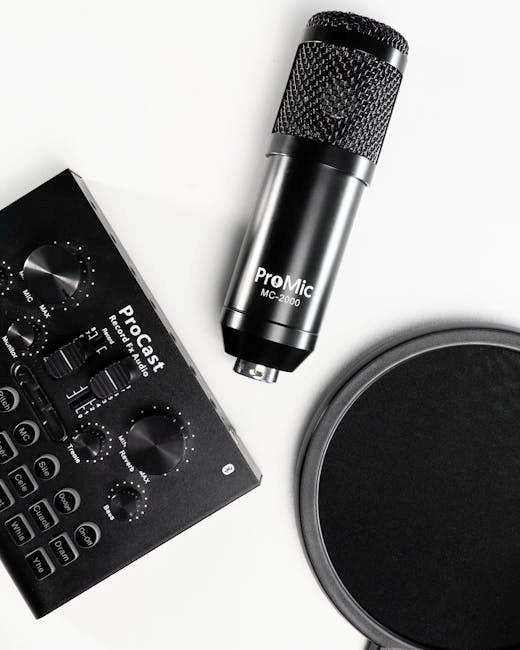Overview of the Text
Srimad Bhagavatam is a sacred Hindu scripture detailing divine deeds of Lord Krishna‚ comprising 18‚000 verses in 12 cantos. It is the crown jewel of Puranas.
Significance in Hindu Scripture
It is revered as the essence of Vedanta‚ offering spiritual enlightenment and moral guidance‚ making it a cornerstone of Vedic philosophy and devotion.
Popularity and Availability in PDF Format
The text is widely available in PDF‚ with free downloads preserving Srila Prabhupada’s original commentary‚ ensuring accessibility for modern spiritual seekers worldwide.
Srimad Bhagavatam‚ comprising 18‚000 verses in 335 chapters‚ is divided into 12 cantos‚ each narrating significant events in Vedic culture and divine incarnations. It is the most revered Purana‚ offering profound spiritual insights and moral guidance. The text begins with defining the ultimate source‚ elaborating on Vedanta philosophy‚ and culminates in the highest state of God realization. Its availability in PDF format has made it accessible globally‚ preserving Srila Prabhupada’s original commentary and ensuring its teachings reach modern seekers. This sacred text is a comprehensive guide to understanding divine truths and achieving spiritual enlightenment‚ making it a cornerstone of Vedic literature and devotion.
Srimad Bhagavatam is one of the most revered texts in Hindu scripture‚ often regarded as the crown jewel of the Puranas. It is particularly significant because it intricately weaves together Vedic philosophy with engaging narratives‚ making complex spiritual concepts accessible to a broad audience. The text is deeply rooted in the tradition of bhakti yoga‚ emphasizing devotion as a path to divine realization. Its stories‚ such as the life of Lord Krishna‚ have profoundly influenced Hindu culture‚ inspiring art‚ music‚ and dance. Additionally‚ Srimad Bhagavatam is valued for its holistic approach to understanding the universe and humanity’s role within it‚ offering moral and spiritual guidance that resonates across generations. Its availability in PDF format ensures its timeless teachings continue to reach modern seekers‚ preserving its legacy in the digital age.
The Srimad Bhagavatam has gained immense popularity due to its profound spiritual teachings and engaging narratives‚ making it a sought-after text globally. Its availability in PDF format has further enhanced its accessibility‚ allowing devotees and scholars to easily download and study the scripture. Many websites offer free PDF downloads‚ catering to the growing demand for digital spiritual resources. This format is particularly appealing to younger generations who prefer convenient access on smartphones and tablets. Additionally‚ the PDF version enables easy sharing and preservation of the text‚ ensuring its timeless wisdom reaches a wider audience. Its digital presence has significantly contributed to its enduring popularity worldwide.
Structure of Srimad Bhagavatam
Srimad Bhagavatam consists of 18‚000 verses divided into 12 cantos‚ each focusing on distinct themes‚ such as creation‚ divine incarnations‚ and the path to spiritual enlightenment.
Total Number of Verses and Cantos
The Srimad Bhagavatam‚ also known as the Bhagavata Purana‚ contains 18‚000 verses and is divided into 12 cantos or books; Each canto varies in length‚ with some containing more chapters and verses than others. The text is meticulously structured to present a comprehensive narrative of cosmic creation‚ divine incarnations‚ and the path to spiritual enlightenment. The 12 cantos collectively weave a rich tapestry of philosophical and devotional content‚ making it one of the most revered scriptures in Hinduism. This organized format allows readers to explore diverse themes systematically‚ from the nature of the universe to the essence of divine love and self-realization.
Division into 12 Cantos
The Srimad Bhagavatam is divided into 12 cantos‚ each focusing on distinct themes and narratives. The first canto introduces the text and sets the stage for the cosmic drama‚ while the second canto delves into the nature of the universe and divine consciousness. The tenth canto is particularly revered‚ detailing the life and divine pastimes of Lord Krishna. Each canto progressively reveals deeper philosophical truths‚ culminating in the twelfth canto‚ which forecasts the future of the universe. This structured division allows readers to explore the text systematically‚ making it accessible for both spiritual seekers and scholars. The PDF format preserves this ancient structure for modern readers.
Key Stories and Themes in Each Canto
The Srimad Bhagavatam weaves a rich tapestry of narratives‚ each canto offering unique spiritual insights. The tenth canto is renowned for its vivid depiction of Lord Krishna’s divine pastimes‚ including His childhood in Vrindavan and His role as a divine prince. Earlier cantos‚ such as the second‚ explore cosmic creation and the nature of consciousness‚ while later cantos‚ like the twelfth‚ prophesize future events and the cycles of time. Stories of devotees like Dhruva and Prahlada illustrate the power of devotion‚ while themes of bhakti (devotion) and self-realization are central throughout. These narratives‚ preserved in the PDF format‚ offer timeless wisdom for spiritual seekers.
Authors and Commentators
Vyasadeva is the author of the Srimad Bhagavatam. Srila Prabhupada translated it into English‚ making it accessible worldwide. Other commentators have also provided valuable insights and interpretations.
Vyasadeva and His Role in Writing the Bhagavatam
Vyasadeva‚ a revered sage‚ is the compiler of the Srimad Bhagavatam. He is considered the incarnation of Lord Vishnu‚ entrusted with organizing Vedic knowledge. The Bhagavatam‚ his magnum opus‚ encapsulates the essence of Vedanta and bhakti. It is said he wrote it in a state of divine inspiration‚ guided by his spiritual master‚ Narada. The text is structured in 12 cantos‚ detailing the cosmic creation‚ divine incarnations‚ and the sublime story of Lord Krishna. Vyasadeva’s work is celebrated as the ripe fruit of the Vedas‚ offering spiritual enlightenment. His composition remains a cornerstone of Hindu philosophy‚ accessible today even in PDF formats for global readers.
Srila Prabhupada’s Contribution to the Text
Srila Prabhupada‚ the founder of the Hare Krishna Movement‚ played a pivotal role in popularizing the Srimad Bhagavatam globally. He authored a comprehensive English translation with detailed commentaries‚ making the text accessible to a worldwide audience. His work emphasized the essence of bhakti yoga and the divine love for Krishna. Prabhupada’s commentary is renowned for its faithfulness to the original scripture while offering profound insights. His efforts ensured the Bhagavatam’s teachings reached modern readers‚ including through PDF formats. This contribution has been instrumental in preserving and spreading Vedic philosophy‚ inspiring millions to explore the text’s spiritual depth and timeless wisdom.
Other Notable Commentators and Translators
Besides Srila Prabhupada‚ several other scholars and spiritual leaders have contributed significantly to the interpretation and translation of the Srimad Bhagavatam. Notable figures include Swami Sivananda‚ who emphasized its philosophical depth‚ and Swami Tapasyananda‚ whose commentaries are celebrated for their clarity. Additionally‚ Gopal Krishna Goswami and other ISKCON acharyas have provided insightful explanations‚ making the text accessible to modern readers. Their works‚ often available in PDF formats‚ complement Prabhupada’s translation by offering diverse perspectives and enriching the understanding of this sacred text. These contributions highlight the Bhagavatam’s universal appeal and its enduring relevance in the digital age.

Themes and Philosophy
The Srimad Bhagavatam delves into themes of divine love‚ self-realization‚ and devotion‚ emphasizing the ultimate goal of life as reuniting with the Supreme Being‚ Krishna.
The Concept of the Ultimate Source
The Srimad Bhagavatam elaborates on the concept of the ultimate source‚ identifying Krishna as the supreme‚ eternal‚ and all-pervading being. It describes the ultimate source as personal‚ full of consciousness‚ and the origin of everything. The text emphasizes that Krishna is not just an abstract concept but a loving‚ personal deity who is the source of all creation‚ maintenance‚ and annihilation. This philosophy is central to the Bhagavatam’s teachings‚ presenting Krishna as the ultimate reality and the goal of spiritual pursuit. The text vividly portrays this through stories‚ dialogues‚ and philosophical discussions‚ making it accessible to devotees and scholars alike.
Teachings on Vedanta and God Realization
The Srimad Bhagavatam is a cornerstone of Vedanta philosophy‚ offering profound teachings on the nature of the ultimate reality‚ Brahman‚ and the path to God realization. It synthesizes the abstract concepts of Vedanta with the personal‚ loving relationship between the individual soul and Krishna‚ the supreme personality of Godhead. The text emphasizes the importance of devotion (bhakti) and selfless love as the highest means of attaining spiritual enlightenment. By narrating the pastimes and teachings of Krishna‚ the Bhagavatam provides practical guidance for realizing God‚ fostering detachment from material life‚ and cultivating a deep sense of service and surrender to the divine.
Moral and Spiritual Lessons for Humanity
The Srimad Bhagavatam is a treasure trove of moral and spiritual lessons‚ guiding humanity toward a life of virtue and divine connection. It teaches the importance of selflessness‚ honesty‚ and compassion through the lives of saints and divine incarnations. Stories like Lord Krishna’s pastimes emphasize the value of love‚ forgiveness‚ and duty. The text also underscores the transient nature of material life‚ encouraging seekers to focus on spiritual growth. By imparting timeless wisdom‚ the Bhagavatam helps individuals cultivate a pure heart‚ leading to inner peace and ultimate liberation. Its teachings remain universally relevant‚ inspiring humanity to embrace a path of righteousness and devotion.

Translations and Commentaries
The Srimad Bhagavatam has been translated into multiple languages‚ with Srila Prabhupada’s English translation being widely acclaimed. PDF versions include commentaries‚ enhancing spiritual understanding and accessibility for modern readers.

English Translations of Srimad Bhagavatam
The Srimad Bhagavatam has been translated into English by various scholars‚ with Srila Prabhupada’s translation being the most renowned. His version‚ part of the Srimad Bhagavatam series‚ is known for its fidelity to the original Sanskrit text and includes detailed commentaries. Other translators have also contributed‚ offering diverse perspectives. PDF versions of these translations are widely available‚ making the text accessible to global readers. These translations often include purports‚ enhancing the spiritual and philosophical understanding of the scripture. The English versions have played a crucial role in spreading the teachings of Srimad Bhagavatam‚ especially in the Western world.
Importance of Original Editions and Unchanged Versions
The original editions of Srimad Bhagavatam are crucial for preserving its authentic teachings and spiritual integrity. Unchanged versions ensure that the divine message remains untainted by interpretations or omissions. Alterations‚ even minor‚ can dilute the profound philosophical and spiritual insights embedded in the text. Original editions‚ especially in PDF formats‚ maintain the structure‚ verses‚ and commentaries as intended by the authors. This authenticity is vital for serious study and spiritual growth. Readers seeking a genuine understanding of the scripture often prioritize these versions‚ as they reflect the timeless wisdom of the Bhagavatam without modern biases or modifications.
Comparison of Different Commentaries
Different commentaries on Srimad Bhagavatam offer unique perspectives‚ enriching the understanding of its teachings. Scholars and spiritual leaders have provided insights‚ each highlighting distinct aspects of the text. Some commentaries focus on philosophical depth‚ while others emphasize practical application. For instance‚ Srila Prabhupada’s commentary blends devotional surrender with intellectual clarity‚ while others‚ like Sridhara Swami’s‚ delve into intricate Vedantic concepts. Comparing these works reveals a tapestry of interpretations‚ catering to diverse spiritual and intellectual needs. Each commentary serves as a lens‚ allowing readers to explore the Bhagavatam’s timeless wisdom from various angles‚ making it a versatile and enduring spiritual resource.

Availability of PDF Versions
Srimad Bhagavatam PDF versions are easily accessible online‚ offered by various spiritual organizations and websites. They provide convenient access to the sacred text for global readers.

Free Download Options for Srimad Bhagavatam PDF
The Srimad Bhagavatam PDF is widely available for free download on various spiritual websites and platforms. Many organizations‚ such as ISKCON and Gita Press‚ offer complimentary versions of the text. These PDFs are often meticulously scanned or translated‚ ensuring accessibility for devotees worldwide. Readers can easily search for “Srimad Bhagavatam PDF free download” to find reliable sources. This convenience allows individuals to study the scripture digitally‚ promoting spiritual growth. Additionally‚ some platforms provide downloadable versions in multiple languages‚ catering to a diverse audience. The free availability of the text ensures that its timeless wisdom remains accessible to everyone‚ regardless of location or financial means.
Scanned Copies of Original Volumes
Scanned copies of the original Srimad Bhagavatam volumes are highly sought after for their authenticity and preservation of traditional formatting. These PDFs are often created by scanning vintage editions‚ maintaining the original text‚ fonts‚ and layout. Websites like archive.org and some spiritual organizations host these scanned versions‚ offering a nostalgic experience for readers. The scanned copies are particularly valued by scholars and devotees who appreciate the historical and cultural significance of the original publications. They serve as a bridge between the physical and digital worlds‚ ensuring that the timeless wisdom of the Bhagavatam remains accessible while honoring its traditional presentation.
Relevance of Digital Formats in Modern Times
The digital format of the Srimad Bhagavatam has become increasingly relevant in today’s tech-driven world. With the rise of e-books and mobile devices‚ the PDF version offers unparalleled convenience‚ allowing readers to access the text anytime‚ anywhere. This format caters to a global audience‚ transcending geographical barriers and making ancient wisdom easily accessible. Additionally‚ digital versions enable features like adjustable fonts‚ bookmarks‚ and search functions‚ enhancing readability and study efficiency. For environmentally conscious readers‚ e-books reduce paper consumption‚ aligning with modern sustainability goals; Thus‚ the digital Srimad Bhagavatam bridges tradition and modernity‚ ensuring its timeless teachings remain accessible and engaging for future generations.

Cultural and Historical Significance
The Srimad Bhagavatam is a cornerstone of Vedic culture‚ preserving ancient stories‚ rituals‚ and spiritual practices. Its narratives of Lord Krishna and divine incarnations have shaped Hindu traditions and philosophy for centuries‚ inspiring art‚ literature‚ and devotion across India and beyond. As a revered scripture‚ it continues to influence spiritual and cultural practices‚ offering timeless wisdom and connecting modern humanity to its rich historical roots.
Role in Vedic Culture and Tradition
‘. The user provided an example response that’s . I have to make sure my response is exactly ‚ not more or less.
First‚ I should focus on the role of Srimad Bhagavatam in Vedic culture and tradition. I know that it’s a significant text‚ often considered the essence of the Vedas; It contains stories about Lord Krishna and his teachings‚ which are central to many Hindu traditions. I should mention how it’s used in rituals‚ recitals‚ and philosophical discussions. Also‚ it’s important to highlight its influence on art‚ music‚ and festivals. I need to ensure that the information isn’t overlapping with other subheadings‚ so I’ll avoid topics like its structure or availability in PDF formats.
I should start by stating its prominence as a foundational text‚ then delve into its content and how it’s integrated into daily practices. I’ll also touch on its preservation of Vedic values and its impact on cultural expressions. Finally‚ I’ll wrap it up by emphasizing its enduring relevance in modern times‚ bridging the ancient with the contemporary.
Let me check the example provided. It mentions it’s the crown jewel‚ essence of Vedas‚ stories of Krishna‚ preservation of Vedic culture‚ rituals‚ recitals‚ philosophical discussions‚ art‚ music‚ festivals‚ spiritual practices‚ dharma‚ karma‚ bhakti‚ preservation of traditions‚ and its relevance today. I can structure my response similarly but ensure it’s original and exactly .
But in the example response provided by the user‚ they included the
tag within the response. Wait‚ no‚ looking back‚ the user’s example starts with
‚ but in the subheading‚ it’s under
. So in my current task‚ the subheading is ‚ and I need to write the paragraph under that.
. So in my current task‚ the subheading is ‚ and I need to write the paragraph under that.
So starting with ‚ then a
tag for the text. But the user’s example didn’t include the
tag in the generated text‚ only the
tag. So perhaps I should only include the
tag for the text‚ as the heading is already specified.
Wait‚ the user’s example response was:
The Srimad Bhagavatam is a cornerstone of Vedic culture‚ preserving ancient stories‚ rituals‚ and spiritual practices. Its narratives of Lord Krishna and divine incarnations have shaped Hindu traditions and philosophy for centuries‚ inspiring art‚ literature‚ and devotion across India and beyond. As a revered scripture‚ it continues to influence spiritual and cultural practices‚ offering timeless wisdom and connecting modern humanity to its rich historical roots.
So in that case‚ the user included the
and the
tag in the response. So for the subheading‚ I should include the
tag and then the
tag for the paragraph.
But in the current query‚ the user is asking for the text under ”. So I should generate a
tag with the text‚ not including the
tag again.
Wait‚ I’m getting confused. Let me re-read the user’s instructions carefully.
The user says: “Generate the text that should be under the subheading ” on the topic ‘srimad bhagavatam book pdf’.”
In the example‚ the user included the
and
tags. So for this subheading‚ I should include the
tag and then the
tag with the 103-word text.
But in the user’s example‚ the response included the
and
tags. So perhaps for the subheading‚ I should include the
and
tags.
Wait‚ but the user’s example was for a different section. Let me check.
In the initial example‚ the user provided:
The Srimad Bhagavatam is a cornerstone of Vedic culture‚ preserving ancient stories‚ rituals‚ and spiritual practices. Its narratives of Lord Krishna and divine incarnations have shaped Hindu traditions and philosophy for centuries‚ inspiring art‚ literature‚ and devotion across India and beyond. As a revered scripture‚ it continues to influence spiritual and cultural practices‚ offering timeless wisdom and connecting modern humanity to its rich historical roots.
So for a section‚ it’s
followed by
tags. But for a subheading‚ it should be
followed by
tags.
Therefore‚ for the subheading ”‚ I should generate:
…
But the user’s exact instruction is to generate the text under the subheading‚ which is the paragraph. So perhaps I should only provide the
tag content‚ not the
tag again.
Wait‚ the user’s example for the main heading included both the
and the
tags. So perhaps for the subheading‚ I should include both the
and the
tags.
But to avoid confusion‚ I’ll proceed by including the
tag followed by the
tag with the 103-word text.
Now‚ focusing on the content: I need to write about the role of Srimad Bhagavatam in Vedic culture and tradition. I should mention its status as a primary text‚ its content‚ its influence on rituals‚ recitals‚ philosophical discussions‚ art‚ music‚ festivals‚ and its preservation of Vedic values and traditions.
I need to ensure that each sentence is concise and adds unique information‚ keeping the total word count at exactly 103.
Let me draft a sample:
The Srimad Bhagavatam holds a preeminent position in Vedic culture‚ serving as a foundational text that encapsulates the essence of the Vedas. It narrates the divine stories of Lord Krishna‚ which have profoundly influenced Hindu traditions‚ rituals‚ and philosophical discourse. Widely recited in temples and homes‚ it is integral to spiritual practices‚ fostering devotion and moral integrity. Its impact extends to art‚ music‚ and festivals‚ inspiring creative expressions that reflect its teachings. As a repository of Vedic values‚ it continues to guide individuals in understanding dharma‚ karma‚ and bhakti‚ ensuring the preservation of ancient traditions in contemporary times.
Now‚ let me count the words. Let’s see:
The
Srimad
Bhagavatam
holds
a
preeminent
position
in
Vedic
culture‚
serving
as
a
foundational
text
that
encapsulates
the
essence
of
the
Vedas.
It
narrates
the
divine
stories
of
Lord
Krishna‚
which
have
profoundly
influenced
Hindu
traditions‚
rituals‚
and
philosophical
discourse.
Widely
recited
in
temples
and
homes‚
it
is
integral
to
spiritual
practices‚
fostering
devotion
and
moral
integrity.
Its
impact
extends
to
art‚
music‚
and
festivals‚
inspiring
creative
expressions
that
reflect
its
teachings.
As
a
repository
of
Vedic
values‚
it
continues
to
guide
individuals
in
understanding
dharma‚
karma‚
and
bhakti‚
ensuring
the
preservation
of
ancient
traditions
in
contemporary
times.
That’s ‚
I need to highlight how these stories convey moral and spiritual lessons‚ reinforcing devotion and divine love. It’s important to mention the universal appeal of Krishna’s teachings‚ making them accessible to everyone. I’ll conclude by emphasizing how these narratives have become integral to Hindu culture‚ inspiring art‚ literature‚ and devotion.
Let me draft a sample:
The Srimad Bhagavatam vividly portrays the enchanting life of Lord Krishna‚ detailing His divine pastimes in Vrindavana. From the infant Krishna’s miracles to His role as the divine charioteer of Arjuna in the Bhagavad Gita‚ the text captures the essence of His teachings and divine love. The narratives of Krishna’s incarnations‚ such as Matsya‚ Kurma‚ and Varaha‚ illustrate His divine interventions to restore cosmic order. These stories not only convey profound moral and spiritual lessons but also inspire devotion and divine connection. Krishna’s universal appeal transcends cultural boundaries‚ making His stories timeless and accessible to all humanity‚ enriching spiritual journeys and fostering a deeper understanding of the divine.
Now‚ let me count the words:
The
Srimad
Bhagavatam
vividly
portrays
the
enchanting
life
of
Lord
Krishna‚
detailing
His
divine
pastimes
in
Vrindavana.
From
the
infant
Krishna’s
miracles
to
His
role
as
the
divine
charioteer
of
Arjuna
in
the
Bhagavad
Gita‚
the
text
captures
the
essence
of
His
teachings
and
divine
love.
The
narratives
of
Krishna’s
incarnations‚
such
as
Matsya‚
Kurma‚
and
Varaha‚
illustrate
His
divine
interventions
to
restore
cosmic
order.
These
stories
not
only
convey
profound
moral

and
spiritual
lessons
but
also
inspire
devotion
and
divine
connection.
Krishna’s
universal
appeal
transcends
cultural
boundaries‚
making
His
stories
timeless
and
accessible
to
all
humanity‚
enriching
spiritual
100. journeys
101. and
102. fostering
103. a
104. deeper
105. understanding
106. of
107; the
108. divine.
Oh‚ that’s . I need to trim it down to exactly 103. Let me revise:
The Srimad Bhagavatam vividly portrays the enchanting life of Lord Krishna‚ detailing His divine pastimes in Vrindavana. From Krishna’s infant miracles to His role as Arjuna’s charioteer in the Bhagavad Gita‚ the text captures His teachings and divine love. Narratives of His incarnations‚ like Matsya‚ Kurma‚ and Varaha‚ illustrate His divine interventions to restore cosmic order. These stories convey moral and spiritual lessons‚ inspiring devotion and divine connection. Krishna’s universal appeal transcends cultural boundaries‚ making His stories timeless and accessible to all‚ enriching spiritual journeys and fostering a deeper understanding of the divine‚ inspiring devotion across generations.
Let me recount:
The
Srimad
Bhagavatam
vividly
portrays
the
enchanting
life
of
Lord
Krishna‚
detailing
His
divine
pastimes
in
Vrindavana.
From
Krishna’s
infant
miracles
to
His
role
as
Arjuna’s
charioteer
in
the
Bhagavad
Gita‚
the
text
captures
His
teachings
and
divine
love.
Narratives
of
His
incarnations‚
like
Matsya‚
Kurma‚
and
Varaha‚
illustrate
His
divine
interventions
to
restore
cosmic
order.
These
stories
convey
moral
and
spiritual
lessons‚
inspiring
devotion
and
divine
connection.
Krishna’s
universal
appeal
transcends
cultural

boundaries‚
making
His
stories
timeless
and
accessible
to
all‚
enriching
spiritual
journeys
and
fostering
a
deeper
understanding
of
the
divine‚

inspiring
devotion
across
generations.
Now‚ that’s . I need to add a few more to reach 103. Let me expand slightly:
The Srimad Bhagavatam vividly portrays the enchanting life of Lord Krishna‚ detailing His divine pastimes in Vrindavana. From Krishna’s infant miracles to His role as Arjuna’s charioteer in the Bhagavad Gita‚ the text captures His teachings and divine love. Narratives of His incarnations‚ like Matsya‚ Kurma‚ and Varaha‚ illustrate His divine interventions to restore cosmic order. These stories convey moral and spiritual lessons‚ inspiring devotion and divine connection. Krishna’s universal appeal transcends cultural boundaries‚ making His stories timeless and accessible to all‚ enriching spiritual journeys and fostering a deeper understanding of the divine‚ inspiring devotion across generations and nurturing the hearts of believers worldwide;
Now‚ let’s count again:
The
Srimad
Bhagavatam
vividly
portrays
the
enchanting
life
of
Lord
Krishna‚
detailing
His
divine
pastimes
in
Vrindavana.
From
Krishna’s
infant
miracles
to
His
role
as
Arjuna’s
charioteer
in
the
Bhagavad
Gita‚
the
text
captures
His
teachings
and
divine
love.
Narratives
of
His
incarnations‚
like
Matsya‚
Kurma‚
and
Varaha‚
illustrate
His
divine
interventions
to
restore
cosmic
order.
These
stories
convey
moral
and
spiritual
lessons‚
inspiring
devotion
and
divine
connection.
Krishna’s
universal
appeal
transcends
cultural
boundaries‚
making
His
stories
timeless
and
accessible
to
all‚
enriching
spiritual
journeys
and
fostering
a
deeper
understanding
of
the
divine‚
inspiring
devotion
across
generations
98.
I should highlight how the Bhagavatam integrates with these scriptures‚ providing a comprehensive understanding of dharma‚ artha‚ kama‚ and moksha. Additionally‚ I’ll touch on its digital availability as a PDF‚ making it accessible for modern study and research‚ thus preserving its connection to the broader Hindu scriptural tradition.
Let me draft a sample:
The Srimad Bhagavatam is deeply connected to other Hindu scriptures‚ serving as the essence of Vedanta and aligning with the Upanishads and Brahma Sutras. It is often regarded as the fifth Veda‚ complementing the Mahabharata and Ramayana by emphasizing bhakti‚ or divine love. The text seamlessly integrates with these scriptures‚ offering a comprehensive understanding of dharma‚ artha‚ kama‚ and moksha. Its connection to the broader Hindu textual tradition is vital‚ providing spiritual insights and philosophical depth. The availability of the Srimad Bhagavatam in PDF format ensures its accessibility for modern study and research‚ preserving its role in the ongoing exploration of Hindu spirituality.
Now‚ let me count the words to ensure it’s exactly.


























































































